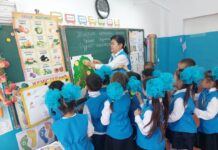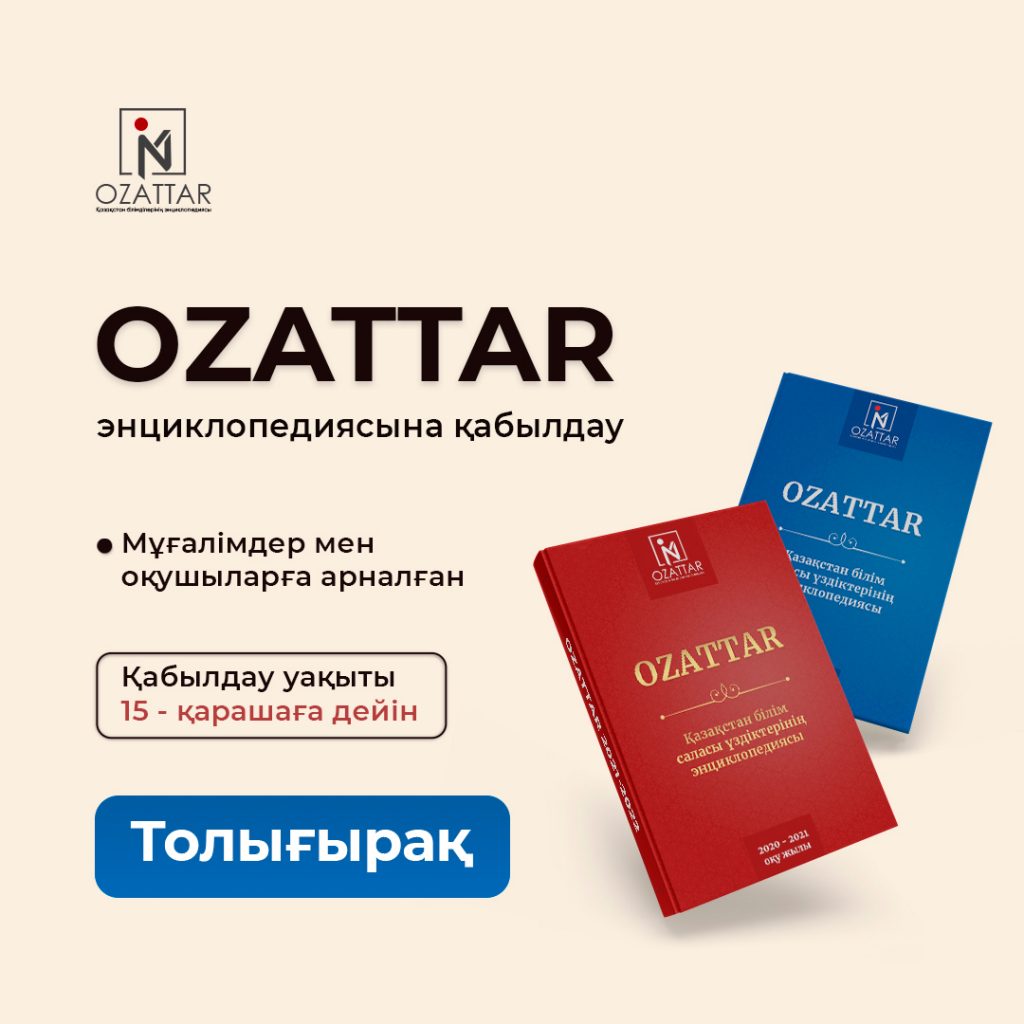| Long-term plan unit: 3 OUR COUNTRYSIDE | School: №278 | |||||
| Lesson 1 | ||||||
| Date: 06.11.2018 | Teacher’s name: Kuandykova Asylzat | |||||
| CLASS: 6 “ Ә ” | Number present: 10 | absent:2 | ||||
| Theme of the lesson: Wild animals. | ||||||
| Learning objective (s) that this lesson is contributing to |
6.3.1.1- provide basic information about the topic at discourse level; 6.3.2.1- ask simple questions to get information on a limited range of familiar general and curricular topics; 6.2.5.1- understand most specific information and detail of supported, extended talk on a range general and curricular topics. |
|||||
| Lesson objectives | All learners will be able to: | |||||
|
Most learners will be able to: • use and understand vocabulary for wild animals. • describe a wild animal. |
||||||
| Some learners will be able to: | ||||||
| Success criteria |
Demonstrate respect to people’s opinions using lexical units of topic vocabulary; Form opinion and give constructive answers to feedback; Identify facts and details in extended talks with little support. |
|||||
| Value links | Kazakh patriotism and civil responsibility | |||||
| Cross curricular links | Kazakh, Russian | |||||
| ICT skills | ||||||
| Previous learning | Reading: A Kazakh Hero | |||||
| Plan | ||||||
| Stages of the lesson | Planned activities (replace the notes below with your planned activities) | Teacher’s notes | ||||
|
Greeting
|
The teacher greets students; students respond to greeting and take their places. | Hello, boys and girls! How are you? | ||||
| Be curious |
• Books closed. Elicit or introduce words to describe what it’s liketo live in the countryside. • Ask students to open their books at page 30. • Elicit sentences to describe the photo, e.g. There is a house on the edge of a cliff. It looks dangerous and far away from other people. Ask students if they know of any houses like this in their country. • Give students a couple of minutes to answer the three questions. • Students can then compare their answers in pairs before you check answers with the class. • Tell students that the theme of Unit 3 is the countryside. |
Suggested answers • I think an elderly couple live in this house. • I think that they live there because it’s their family home. Their parents and grandparents lived there, too. And their children probably moved to a big city. • The view from this house is great, but I wouldn’t like to live there. I like living in a flat. It’s near my school and a park. |
||||
| Warm up |
• Books closed. Put students into small groups. • Give students a minute to make a list of animals. Items could include farm as well as wild animals. • Make this competitive by telling students that the group that comes up with the most words wins.
Brainstorming. Students stand in a circle. The teacher has a ball and throws it randomly to the students. When students catch the ball, they are asked a question from last unit. “is” in the past simple Translate: патша Translate: ақсүйек Translate: таңдану, үлгі ету
Translate: шаруалар Translate: сері Translate: мейірімді Translate: үлгі Translate: чемпион Translate: феодалдық Translate: тарих
The teacher shows the lesson objectives and discusses them with the learners based on the following questions: What are we going to do today? What skills will we develop?
|
|||||
|
Practice
End |
Pre-reading activities. Next, the teacher shows the title of the story learners will read during the lesson (Wild animals in Kazakhstan) and asks students what the story may be about.
Today the wildlife of Kazakhstan includes 158 species of mammals, 458 species of birds, 52 species of reptiles, and 150 species of fish, 19 species of animals. They are included into the International Red Book of rare or endangered animals. In the mountains of the Zailiiski Alatau alone, there are about 50 species of mammals, 141 species of birds and 3 species of fish.
New words from the text. Students are introduced to the new words from the text. There are pictures and definitions of the words on PPT that the teacher uses for explaining the words. Also, the teacher needs to make students drill the words for promoting good pronunciation.
Post-reading activities. • Ex1 Ask students to open their books at page 31. • Use the pictures to revise the names of animals before students do the matching exercise. Students could also check how many of the words they mentioned in the warm up are shown in the pictures. • Put students into pairs to do the matching exercise. • Weaker students can look up the meanings of the words in a dictionary. • Play the recording tr1.19 for students to listen, check their answers and repeat the phrases.
• Ex2 Read out the items. • Put students into pairs to find the animals from Exercise 1. • Check answers. • You could extend this by putting students into small groups and asking them to write three sentences similar to those in Exercise 2. You could then give those sentences to different groups to try and find the animals. |
Answers
• Ex1 a mouse b duck c seal d rabbit e camel f bear g deer h snow leopard i insect j wolf k gazelle l snake
• Ex2 1 duck, seal 2 rabbit, camel, deer, gazelle 3 insect 4 mouse 5 bear, snow leopard, wolf, snake
|
||||
| Game Play Pictionary with the vocabulary for wild animals. | See Games bank on pages 28–29. | |||||
|
• Ex3 Ask students to describe the wild animals shown in Exercise 2. Elicit the words and phrases that students might need to use for this task and write them on the board, e.g. an animal with, it has/they have, lives in/on, etc. • Give students time to make notes about the animal.
Energizer Dance — Charlie Bear “Agadoo”
Formative assessment
Giving marks and conclusion. Reflection. “Two stars and wish” What was interesting to you? What was difficult? What did you like the most?
|
Optional activity • Put students into pairs or small groups. • Ask students to look for images of other wild animals that you can find in Kazakhstan online. • Students say what they think of the animals and then pick their favourites, which they can then share with the class.
|
|||||
| Homework | Exercise: 4 Learn by heart new words. | |||||
| Additional Information | ||||||
| Differentiation — how do you plan to give more support? How do you plan to challenge the more able learners? | Assessment — how are you planning to check learners` learning? | Health and safety check ICT links | ||||
| More support will be given to weaker learners by giving them a modified worksheets in some tasks with greater support |
-through questioning and the redirecting of questioning in feedback activities -through observation in group and end performance activities -through formative task
|
-White board and video is used no more than 10 minutes -Use water based pens -Health promoting techniques -Breaks and physical activities used. -Points from Safety rules used at this lesson. |
||||
|
REFLECTION
|
Answer the most relevant questions to reflect on your lesson. Were the lesson objectives/learning objectives realistic? What did the learners learn? What did/didn’t you like? What was difficult? |
|||||




